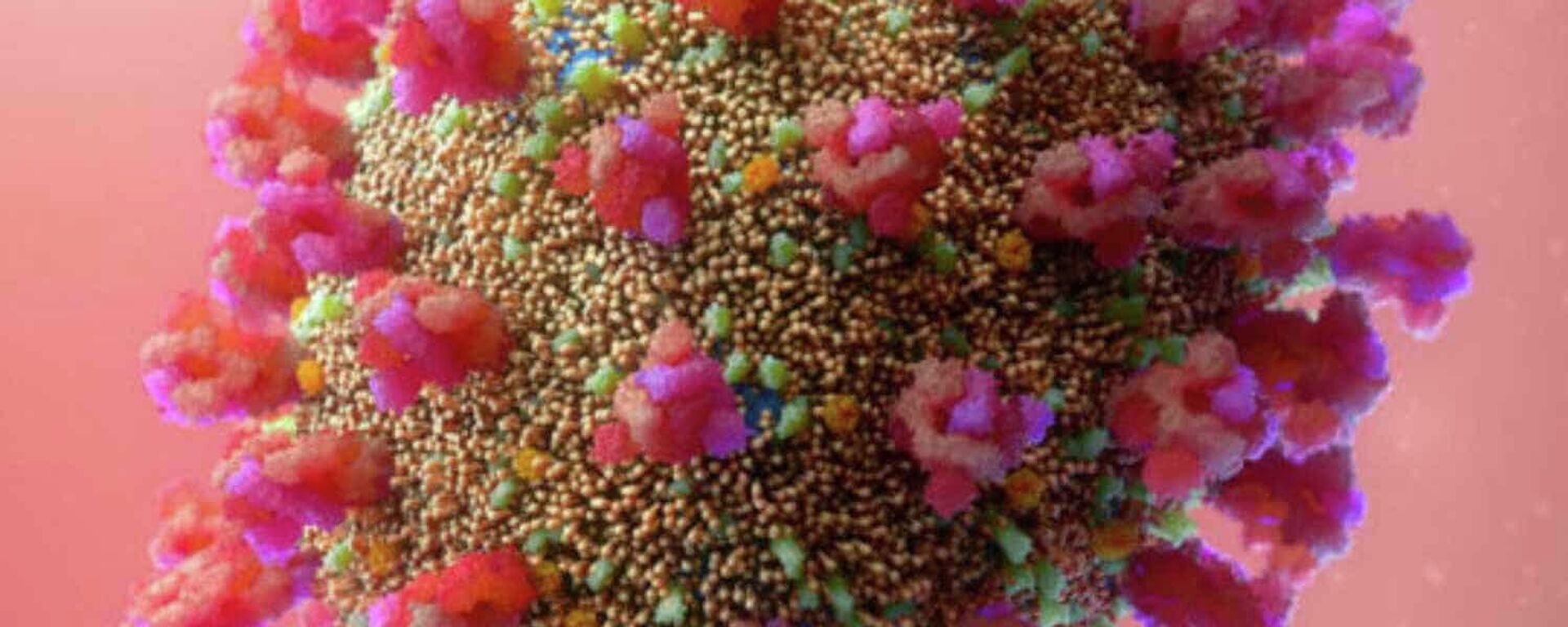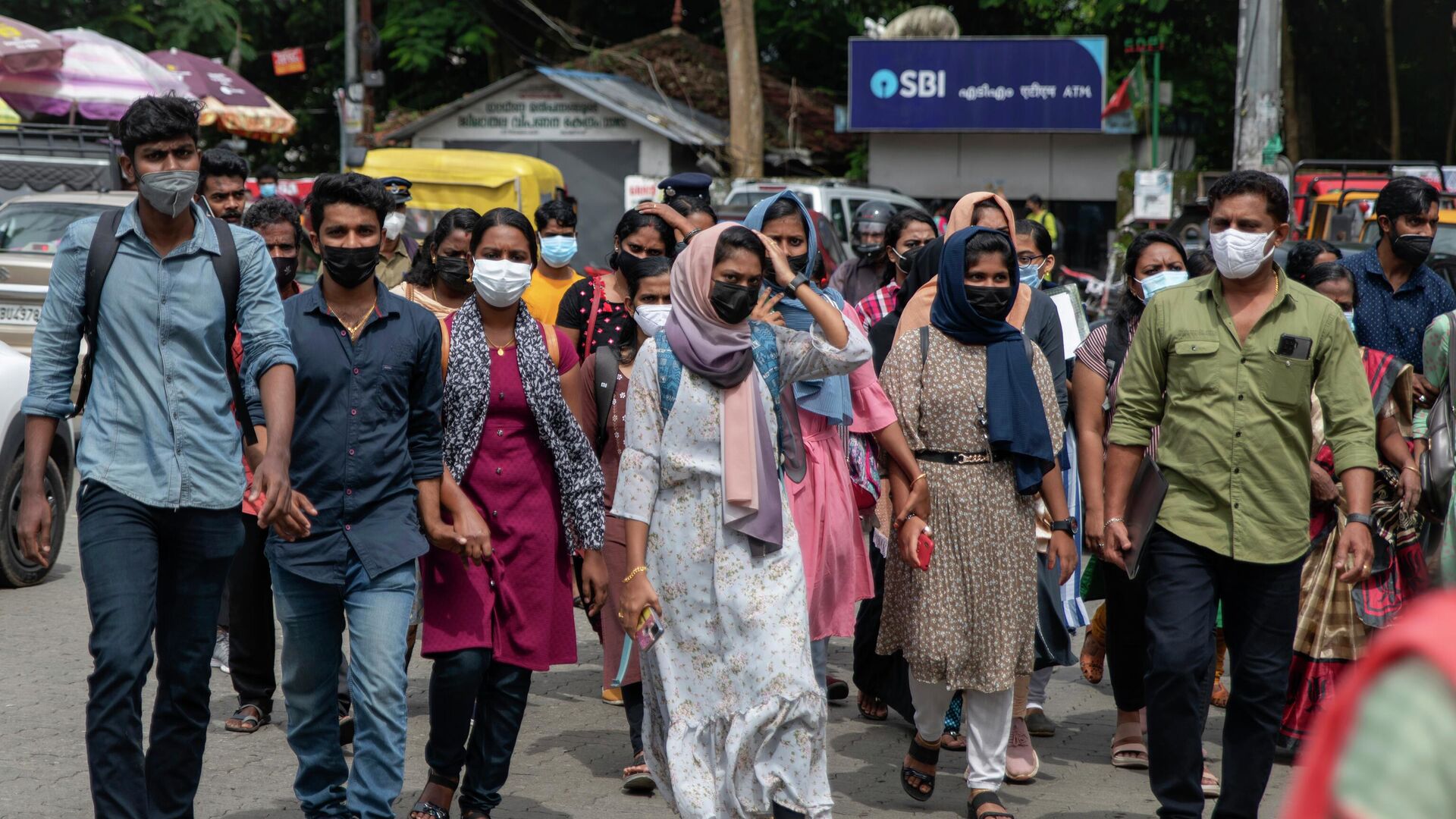https://sputnikglobe.com/20221018/new-wave-of-covid-19-looms-in-india-with-the-emergence-of-omicron-subvariants-1102000070.html
New Wave of COVID-19 Looms in India With The Emergence of Omicron Subvariants
New Wave of COVID-19 Looms in India With The Emergence of Omicron Subvariants
Sputnik International
As India gears up to celebrate Diwali, the festival of lights, followed swiftly by Govardhan Puja, a celebration dedicated to Lord Krishna, and Bhai Dooj which... 18.10.2022, Sputnik International
2022-10-18T13:32+0000
2022-10-18T13:32+0000
2022-10-18T13:59+0000
india
coronavirus
omicron strain
life under covid-19 quarantine
covid-19
https://cdn1.img.sputnikglobe.com/img/07e6/0a/12/1102004856_0:0:3071:1728_1920x0_80_0_0_43648b45d2ced5574f7e5f32f4c0ac70.jpg
After the US and Europe, a new variant of omicron BQ.1 has now been detected in Pune city of India's Maharashtra state. The BQ.1 is a descendant of BA.5, which is behind 60 percent of COVID cases in the US. Just a day before, another case of subvariant of the omicron variant BF.7 - also known as the 'omicron spawn' which was first detected in China and spread across the US, UK, Australia, and Belgium - was also confirmed in India's Gujarat state. Another sub-variant XBB - a combination of two omicron sub-lineages BA.2.75 and BJ.1, and accounting for 54 percent of the local cases in Singapore - is also on the rise in India, causing 20 to 30 percent of infections reported in Maharashtra.Amid the rise in new subvariants of Omicron, Indian scientists, working behind genome sequencing in India, told local media that the BA.2.75 sublineage of omicron's BA.2 variant continues to dominate the country with almost 98 percent of cases. With the detection of yet another new subvariant BQ.1 detected in the latest genome sequencing conducted in October, scientists have raised an alarm and said that the subvariants have the potential to cause surges and hence, should not be ignored.As the cases of COVID variants rise, experts have called for close genomic surveillance both from patient samples (outpatients and inpatients) and wastewater to assess the evolution of the new omicron sublineages. Indian scientists continue sequencing samples in three big labs in Maharashtra, Gujarat, and West Bengal states to identify newer variants.
https://sputnikglobe.com/20221017/just-why-boston-university-researchers-combine-omicron-wuhan-strains-to-make-deadliest-covid-ever-1101966140.html
Sputnik International
feedback@sputniknews.com
+74956456601
MIA „Rosiya Segodnya“
2022
Sangeeta Yadav
https://cdn1.img.sputnikglobe.com/img/07e4/08/1b/1080292803_0:121:960:1081_100x100_80_0_0_7490b319dab9611e309056b177265184.jpg
Sangeeta Yadav
https://cdn1.img.sputnikglobe.com/img/07e4/08/1b/1080292803_0:121:960:1081_100x100_80_0_0_7490b319dab9611e309056b177265184.jpg
News
en_EN
Sputnik International
feedback@sputniknews.com
+74956456601
MIA „Rosiya Segodnya“
Sputnik International
feedback@sputniknews.com
+74956456601
MIA „Rosiya Segodnya“
Sangeeta Yadav
https://cdn1.img.sputnikglobe.com/img/07e4/08/1b/1080292803_0:121:960:1081_100x100_80_0_0_7490b319dab9611e309056b177265184.jpg
india, coronavirus, omicron strain, life under covid-19 quarantine, covid-19
india, coronavirus, omicron strain, life under covid-19 quarantine, covid-19
New Wave of COVID-19 Looms in India With The Emergence of Omicron Subvariants
13:32 GMT 18.10.2022 (Updated: 13:59 GMT 18.10.2022) As India gears up to celebrate Diwali, the festival of lights, followed swiftly by Govardhan Puja, a celebration dedicated to Lord Krishna, and Bhai Dooj which marks the relationship between brothers and sisters, new BQ.1, BF.7 and XBB subvariants of omicron have started to emerge after outpacing many rival strains in Europe and the US.
After the US and Europe, a new variant of omicron BQ.1 has now been detected in Pune city of India's Maharashtra state.
The BQ.1 is a descendant of BA.5, which is behind 60 percent of COVID cases in the US.
Just a day before, another case of subvariant of the omicron variant BF.7 - also known as the 'omicron spawn' which was first detected in China and spread across the US, UK, Australia, and Belgium - was also confirmed in India's Gujarat state.

17 October 2022, 17:54 GMT
Another sub-variant XBB - a combination of two omicron sub-lineages BA.2.75 and BJ.1, and accounting for 54 percent of the local cases in Singapore - is also on the rise in India, causing 20 to 30 percent of infections reported in Maharashtra.
Amid the rise in new subvariants of Omicron, Indian scientists, working behind genome sequencing in India, told local media that the BA.2.75 sublineage of omicron's BA.2 variant continues to dominate the country with almost 98 percent of cases.
With the detection of yet another new subvariant BQ.1 detected in the latest genome sequencing conducted in October, scientists have raised an alarm and said that the subvariants have the potential to cause surges and hence, should not be ignored.
"These are all next-generation strains, or offspring, of the omicron variant of SARS-CoV-2. Since omicron's emergence in January this year, we have not seen a completely new variant of the virus. However, these sub-variants, called sublineages, also have the potential to cause surges, so they should not be ignored," a scientist from the National Institute of Virology (NIV) told daily newspaper, the Times of India.
As the cases of COVID variants rise, experts have called for close genomic surveillance both from patient samples (outpatients and inpatients) and wastewater to assess the evolution of the new omicron sublineages.
Indian scientists continue sequencing samples in three big labs in Maharashtra, Gujarat, and West Bengal states to identify newer variants.





